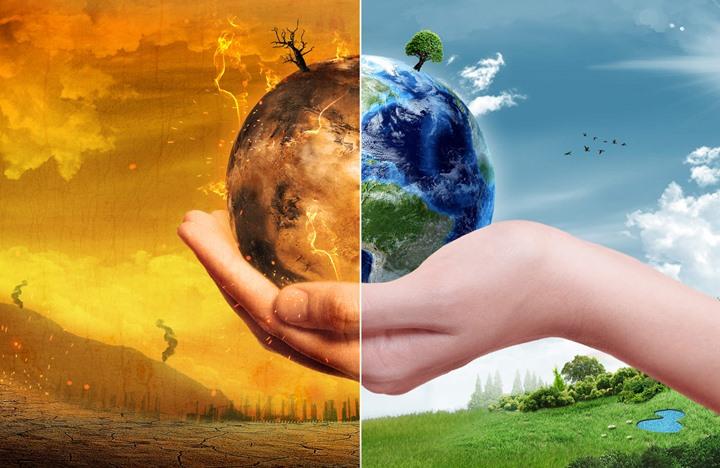Arising in Africa in the midst of an ice age, homo sapiens are very much a new species. The way we came to dominate our planet so quickly and mastered tool and energy use broke the usual pattern of evolution: this kind of progress would ordinarily take millions of years, but we pioneered it in mere millennia. We must be conscious of this fact when considering our impact on the environment.
Around, 70,000 years ago, homo sapiens jumped to the top of the planet’s food chain. Exactly what happened at this juncture is the subject of much discussion; authors generally agree that better cooperation between individuals was paramount. Diamond (1991)i, points to the development of language allowing communication amongst individuals at a more intricate level. Harari, in his popular science book Sapiens (2015) talks of a “Cognitive revolution” in which our thinking abilities became uncoupled from our genesii. This permitted the invention of folklore and allowed societies to coalesce around fictions to create collective motivation on an unprecedented scale. For example, strangers who had never met eachother, but shared gods and fables could more quickly find common ground and work together more effectively.
Whatever the case, homo sapiens burst out of the African savannah onto the Eurasian steppe, sending their brothers and sisters into extinction as they did so (d’Errico, F., Sanchez Goñi, 2003)iii. That’s right, at that time other human species were still wandering the globe, most famously the Neanderthals, essentially our stockier, stronger doppelgangers. They were however unable to compete with us for resources and were wiped out within a few thousand years. Reaping a path of destruction is a recurring theme throughout the history of homo sapiens.
As we reached Australasia and subsequently the Americas, we compounded climate and habitat pressures by overhunting large mammals such as the woolly mammoth and the sabre-toothed tiger, condemning them to the fossil record (Ripple and Van Valkenburgh, 2010)iv. When Europeans discovered the Americas for the second time in 1492, white men led most Indian tribes to their untimely death. All this when global population was 10,000 times smaller and used only a fraction of the energy we do. With this in mind, it should not be surprising that as of today, human impact has resulted in a background extinction rate 1,000 times above natural levels which could soon rise to 10,000 (De Vos et al., 2004)v. Scientists have labelled this the “Sixth Mass Extinction” because of the shear range of species affected. Most concerning is the disappearance of species key to human existence, such as plankton, which provide half of the world’s oxygen, and bees which underpin worldwide crop production through pollination (British Ecological Society, 2012)vi.
Whilst crop monocultures do cover vast swathes of the earth’s surface, their effects are small when compared to livestock farming. Over 60 billion domesticates are slaughtered each year and together with humans they make up 93% of the terrestrial vertebrate biomass. This is pushing out wild species and having a devastating impact on their habitats (Bonneuil and Fressoz, 2016)vii. For this we largely have increasing population and industrial agriculture techniques to thank. Yet so many people are still blind to this issue and fail to make the link between meat consumption and planetary eco-system breakdown (Boggs, 2007)viii. In fact, many obvious connections between our behaviour and its effect on the environment are simply ignored (think driving diesel cars and taking the plane). Maybe the issue is that there has not been one watershed event allowing people to understand the seriousness of it all. The last extinction on a scale comparable to the contemporary one was 65 million years ago when the dinosaurs disappeared. That was caused by a gigantic meteorite smashing into the face of the earth and exploding with the force of 60 billion nuclear bombs (University of Texas, 2000)ix. Think of that as an analogy to human impact on the planet.
Nuclear bombs represent the apogee of homo sapiens’ long attempt to master energy. Proto humans first started this process 400,000 years ago with the discovery of fire, which was subsequently applied to various uses such as cooking and forest clearance. It wasn’t until the industrial revolution however that our interactions with energy got us into serious trouble. With the arrival of manufacturing, our fossil fuel use mushroomed, and energy demand increased tenfold. Now so much carbon dioxide has been released into the atmosphere that scientists expect a temperature rise of around 3oC by 2100, which would be unprecedented in the last 120,000 years and possibly far longer (IPCC, 2007)x. Some studies, such as Meehl et al. (2006), affirm that on current emissions pathways, by 2300 the earth could get so hot it becomes uninhabitable for humansxi. This is the ultimate risk, that human’s propensity to send species tumbling into oblivion extends even to itself.
And there is no reason when looking at the cosmos to the think that we will end up on a different path than this. The fact that the universe is so big and yet we are the only intelligent life forms is known as the “Fermi Paradox” (for a brief overview of this, Kurzgesagt’s video is well worth a watch)xii. The lessons it teaches us are important. Two of the leading explanations of the paradox are as follows: i) Earth is the only place in the universe to have ever harboured life, ii) planets have played host to civilisation, but they have all destroyed themselves. If the latter is true, then homo sapiens could be on this path and we must stop harming our environment before it’s too late. If the former is true, then we owe it to the universe not to destroy its only offspring capable of observing itself.
If the prognoses of the Fermi paradox are gloomy, that should not necessarily colour our outlook. As discussed above one of the key lessons of human history is our exceptional ability to cooperate. And cooperation at all levels is precisely what we need in order to work towards a solution to the environmental crisis. But as we do so we must always remember our true place in the order of things: ape-like newcomers with a penchant for destruction, desperately trying to save our only home from an environmental crisis of our own making.





Laisser un commentaire
Vous devez vous connecter pour publier un commentaire.